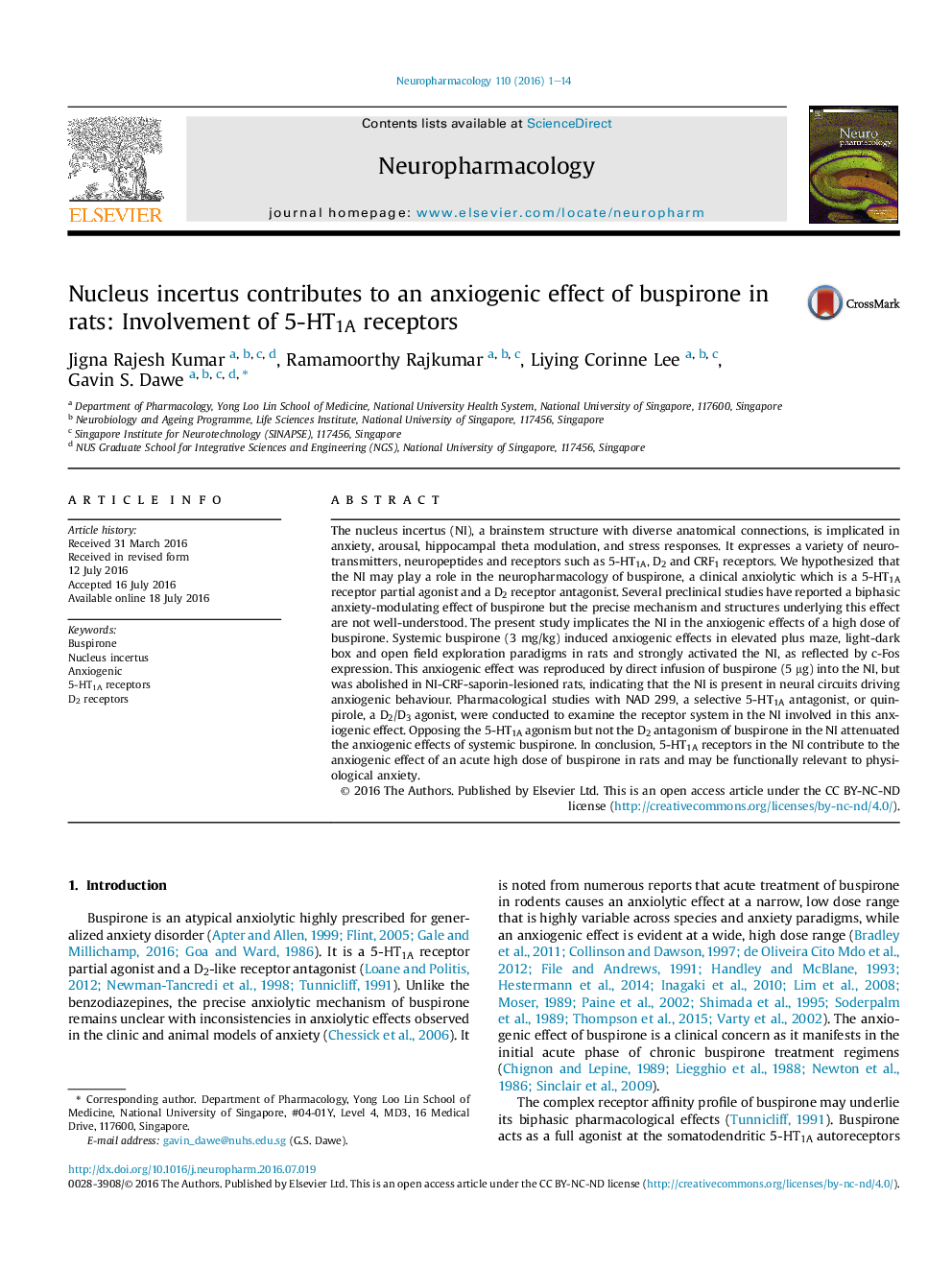| کد مقاله | کد نشریه | سال انتشار | مقاله انگلیسی | نسخه تمام متن |
|---|---|---|---|---|
| 5549202 | 1402859 | 2016 | 14 صفحه PDF | دانلود رایگان |

- The nucleus incertus (NI) is involved in stress and anxiety responses.
- Buspirone has a dose-dependent biphasic anxiolytic/anxiogenic effect.
- NI lesions prevented anxiogenic effects of systemic buspirone (3Â mg/kg) in rats.
- Intra-NI buspirone (5 μg) produces an anxiogenic response.
- 5-HT1A receptors in the NI contribute to the anxiogenic effects of buspirone.
The nucleus incertus (NI), a brainstem structure with diverse anatomical connections, is implicated in anxiety, arousal, hippocampal theta modulation, and stress responses. It expresses a variety of neurotransmitters, neuropeptides and receptors such as 5-HT1A, D2 and CRF1 receptors. We hypothesized that the NI may play a role in the neuropharmacology of buspirone, a clinical anxiolytic which is a 5-HT1A receptor partial agonist and a D2 receptor antagonist. Several preclinical studies have reported a biphasic anxiety-modulating effect of buspirone but the precise mechanism and structures underlying this effect are not well-understood. The present study implicates the NI in the anxiogenic effects of a high dose of buspirone. Systemic buspirone (3 mg/kg) induced anxiogenic effects in elevated plus maze, light-dark box and open field exploration paradigms in rats and strongly activated the NI, as reflected by c-Fos expression. This anxiogenic effect was reproduced by direct infusion of buspirone (5 μg) into the NI, but was abolished in NI-CRF-saporin-lesioned rats, indicating that the NI is present in neural circuits driving anxiogenic behaviour. Pharmacological studies with NAD 299, a selective 5-HT1A antagonist, or quinpirole, a D2/D3 agonist, were conducted to examine the receptor system in the NI involved in this anxiogenic effect. Opposing the 5-HT1A agonism but not the D2 antagonism of buspirone in the NI attenuated the anxiogenic effects of systemic buspirone. In conclusion, 5-HT1A receptors in the NI contribute to the anxiogenic effect of an acute high dose of buspirone in rats and may be functionally relevant to physiological anxiety.
Journal: Neuropharmacology - Volume 110, Part A, November 2016, Pages 1-14